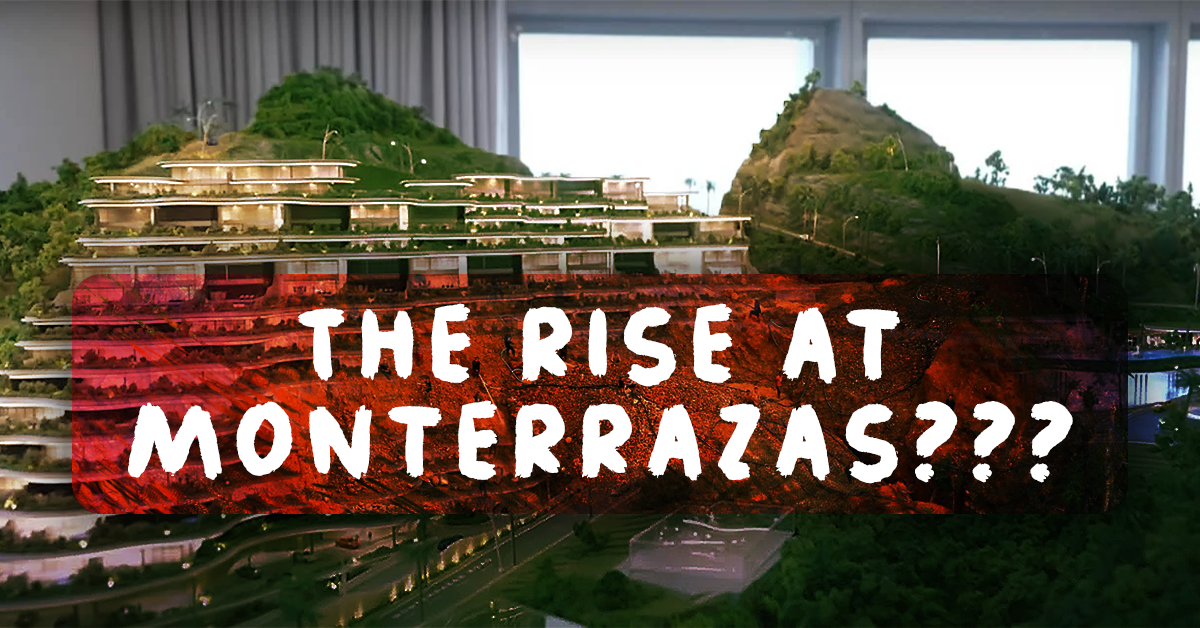Monterrazas. Sustainability. Slater Young.
I bet you already have figured out why I am writing this article. Like you, I would have never imagined these three words being joined in the same context as it is now. I am taken aback by the amusement of the idea that building a Banaue-like development project would actually be possible. Some might say it is just too ambitious and will permanently alter the ecosystem within the vicinity despite the 'assurance' of several professional minds collaboratively working on this. On the other hand, some would support this development as this will be a feat for the Philippine architecture and construction industry. With the ever-developing world, is sustainability still the most important factor to consider or will lone development take the lead, putting our environmental situation in jeopardy?
Last August 24, entrepreneur-engineer Slater Young released a video about the launching of the infrastructure model, “The Rise at Monterrazas,” a major-scale development project that features premium condo-like units on the slopes of the mountain of Cebu. According to Young, it took about 300 design revisions before they came up with the Banaue Rice Terraces-inspired design, as this type of project with complexity and detail requires thorough research and vast knowledge in science, architecture, and engineering. However, conflicting perspectives online started to buzz and counter its 'amusing' promises.
Concerns about its detrimental environmental impact on development were the top worry of concerned individuals. As we look into the details of the project, traffic, possible calamities-induced (landslides, flooding, etc.) casualties, and deforestation are some of the challenges highlighted to the team behind this breakthrough architectural landmark. Looking through the lens of deforestation, several trees, and the areas with established ecological communities will be lost. In contrast, Slater Young mentioned their "way of giving back" to nature by incorporating one hectare of green spaces into the project - but the real question is whether these so-called solutions as a "way of giving back" are sufficient to compensate for the destruction caused by its implementation, or if it will only serve as a green show.
Geographically speaking, the development site is located near the Guadalupe area which is the biggest residential barangay in Cebu. This will highly affect the residents of the nearby community– risks of landslides and massive flooding will accelerate as a result of an altered infiltration system in the mountainside. However, Slater Young recently issued an update on the development project, including the multiple geotechnical tests they undertook to assess the profile of the mountain's soil. Young also revealed that they have been reviewing previous studies and will do additional testing to completely understand the soil properties.
Slater Young and his team have been trying to slide this project to the public by posting updates and answering queries and concerns backed up with research and data, but this is still not enough to flip the opposition. Sure, the experts who worked on this project would not have called as such if they had not honed their academic knowledge and experience, but this does not give them a free pass to evade the scrutiny of the public and their need to respond for complete transparency about their plans on maintaining the ecological community within the site as well as being open for more suggestions from other experts to alleviate the public’s apprehension.
In the talk on sustainability, Young mentioned that they want this to be as sustainable as possible; thus, including sustainability plans in this project is one of their goals. However, the irrigation system they will be implementing is the only thing they have explained in detail so far - as questions about the volume of the tank collecting rainwater being equivalent to the volume of water collected naturally are also raised.
In all honesty, I have nothing against the people who work for architectural advancement and development, but things must meet halfway at some point. In the realm of sustainability, is it worth annihilating the mountainside in replacement of fancy infrastructure development? Is green really worth turning to glass, just because it's 'promising' and 'innovative'?
We cannot deny that this architectural breakthrough has piqued others' interest as proof that Filipinos are capable of designing such complex structures. While some are also looking forward to its positive effects on Cebu tourism, visualizing that if this project is realized, it will boost the tourism industry of the city. But how much more can we sacrifice for such developments? Endangering the environment in exchange for luxury buildings is not a scene I wish to see unfold, even if it pleases my eyes. In this rapidly evolving world where our environment gets heavily wounded in the process, Slater Young's drive might be the first thing to blame when this project does not live up to its claims.
Besides, the environment already has too much on its plate. If they want, they can always build something on Minecraft instead.


